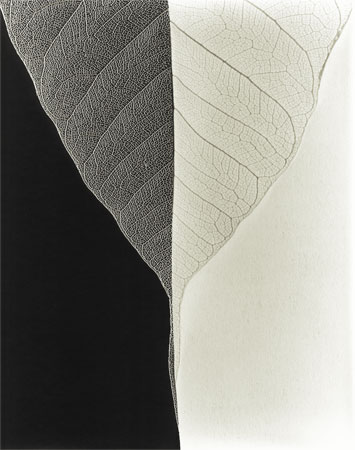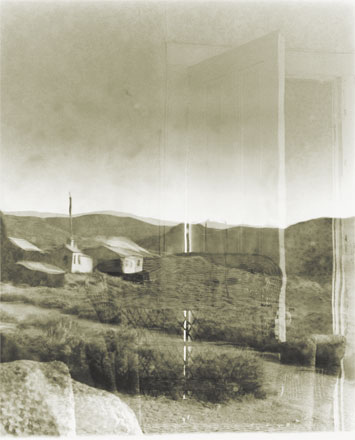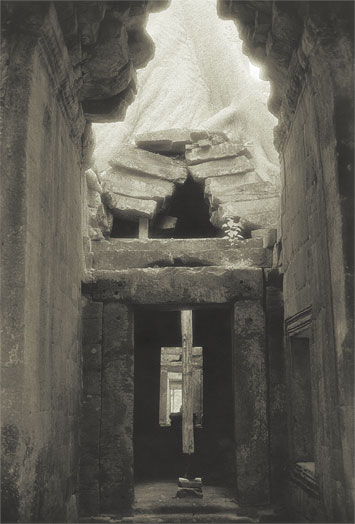Russel Kwan
Pictures, pictures. All my life, I’ve been surrounded by pictures. I’ve got old, dog-eared copies of Life magazine from my mostly misspent youth laden with pictures from the Moon, Vietnam, The Beatles, Iowa cornfields, Nikita Khruschev… all the ephemera of living. I remember marveling at the incredible capacity for a little machine to do all that. I remember wondering what it would be like to be in control of the little machine.
Turns out, making pictures has very little to do with the little machine. It takes the intuition of a child, the mind of a scientist and the heart of an explorer to wring pictures out of some chemical stains stuck to flimsy strips of plastic. That is now my preoccupation.
Learning how to extract pictures has been a difficult and meandering path. I am what my mentors call “auto-didactic”, which is a fancy way of saying “self-taught”; it also means “does not function well in a classroom”. Along the way, I gathered a Bachelor’s degree from UBC in computer science, and helped develop a lot of our contemporary software, particularly in the digital imaging and prepress industries. Those digital experiences made me realize the great, unexplored, unpushed frontiers are no longer with sensors and computers and software, but way back at those chemical stains of my mostly misspent youth.
The past several years have been a breathtaking journey of rediscovery, and lately, groundbreaking exploration. Wendy and I went back to square one, building a darkroom (a really great darkroom) from scratch, exploring the equipment and materials, and living through the sheer terror of thinking that it might all become obsolete. Turns out, obsolescence is highly under-rated. We are now experimenting with homemade chemistry, homemade cameras, homemade print materials – the capacity to homemake is becoming the new marvel. That is where the art meets the science of photography.
It’s not like everything I do is homemade – I still use, and marvel at, the incredible little machines – which seem all the more beautiful as the world forgets how to make them, and even how to use them. And I am still surrounded by pictures.
Why Not Go Digital?
In truth, I’d go digital in a heartbeat if I thought digital had nearly the scope for invention and innovation offered by film, chemistry and the darkroom. Digital is so much less expensive, requires so much less physical space and equipment and has far fewer hazards than analogue. But, digital is also far less malleable than analogue: how many photographers out there have actually created a useful piece of digital imaging hardware or software? Weirdly, I might be amongst the handful – in my prior career in computer science, I worked on these little applications that shipped with Microsoft Office in the late 1990’s: Photo Editor and Media Library. Photo Editor could run Photoshop plugins, and I’ve written a few of them. In those days, I also worked on the JPEG and GIF import/export mechanisms for MS Office and Explorer. I also worked on the first version of InDesign for Adobe, again in raster and vector graphics import/export. One of the many things I learned then is: hundreds, if not thousands of software engineering hours go into making a little slider that photographers and civilians can slide back and forth. That’s very little bang for the effort, if you’re not getting paid directly for it (…I was).
What I really want to do is invent. In my analogue world, pretty much anything can be made from scratch, with some thinking and some effort. Lately, I’ve created a homebrew print chemistry that produces colourful, one-of-a-kind prints from black and white paper, a camera made out of PVC pipe from Home Depot and a beer can, a chemistry that enables extreme over-exposure of film, and a modification of a Holga camera to do what Hollywood calls “slit-scan”. I’ve used all of these things in the past months and years to make interesting images – and I’d say that none of these images would be possible with any of them Dx Mky’s or the sliders you’ll find in a software release. And all were done much faster than I can make a slider do anything interesting.
I couple my love of invention with my desire to produce really great prints – and I’ve found no medium that suits my temperament better than silver gelatin. Sometimes, I get a print that (almost) literally glows – there is a little bit of luck involved here, as the glowing print is often the only one of an edition that might be printed all at once, all on the same day. Those glowy prints sell fast. Another other great thing about silver gelatin prints is: they are becoming pretty rare. Pretty much nobody knows how to make them anymore, and many educational institutions are (with great foresight) demolishing their darkrooms. A last great thing about silver gelatin prints is: they last a really long time - hundreds of years - and we know this for sure because we’ve got silver prints today that were made around 1840. No better test than time itself.
Sometimes, convenience does not equal creative. Sometimes, efficiency does not equal interesting. And sometimes, sitting in front of an enlarger is more fun than sitting in front of an LCD and a mouse.
My Pictures On This Website
Around this website, you’ll find a small selection of work from a few collections…
The earliest work is from my studio explorations, working with plastic models and natural artifacts to create illusions of scale: my attempt to bring small things of intricate natural design into the scale of architecture. Much of this play involves creating dramatic lighting, and carefully managing the depth of field of the photograph to maintain the illusion.
The second collection has to do with optical illusions, another personal long-term interest. My purpose is to challenge the notion of “truth” in photography - to get the viewer wonder “how is that?” In this group, I’m working the interplay between elements. When one considers light an active element, the reality of the picture becomes clear.
The third group contains views largely collected from abandoned towns in
The latest group is largely experimental work that has been going on since 2007. The experiments have been eclectic, so the work is eclectic. I expect things will coalesce soon, as things tend to.
The Technical Bits
My principal camera is a Mamiya 7II, with 150mm, 80mm and 65mm lenses. I also work with a Sinar P2 4x5 in the studio, and I sometimes take a Wisner wooden 4x5 field camera out in, well, the field - typically outfitted with Schneider 240 and 300mm lenses. I've recently rekindled an interest in taking 4x5 back to the streets - so I'm now working with a Fotoman 45PS, a bulletproof 4x5 that can be handheld. I use a venerable Canon F-1 as my 35mm kit - I’ve owned and used F-1’s since 1976, and we have a fleet of lenses, but lately, I’ve been using just the 50mm f/1.4 and 15mm fisheye. Have a look at our Glossary Page to see some of our wacky gear.
Our darkroom features a Photo-Therm SSK-8R film processor and a Beseler 45-VXL enlarger with a Universal 45 Colorhead.
I use Ilford HP5+, Delta 3200, Kodak HIE and HSI film; Ilford Perceptol film developer; Ilford, Oriental, Bergger, Forte and Agfa fiber-based papers; Ilford Multigrade paper developer; and Kodak Selenium and Sepia toners.
I often get asked how much Photoshop features in my workflow. For my finished silver gelatin prints, the answer is “not at all”. Photoshop necessarily featured in the production of Chasing Light Stranger and this website, but only to the extent that it is a great manager for our scanner, and a great mechanism for doing tritone separations for offset press.
Community
Wendy and I are very active in the
Further Information
For more information on processes and ongoing research, please see our process page, our photography log page, and our resources page.
*
Vancouver BC Canada
About Wendy
About Our Process
Exhibitions, Awards, Publications, Public Service and Reviews
Photograph Prices
back
home

"Spires" - Russel Kwan - 11"x14" - edition of 3
order print
Google Analytics

"Living Room" - Russel Kwan - 11"x14" - edition of 3
order print
